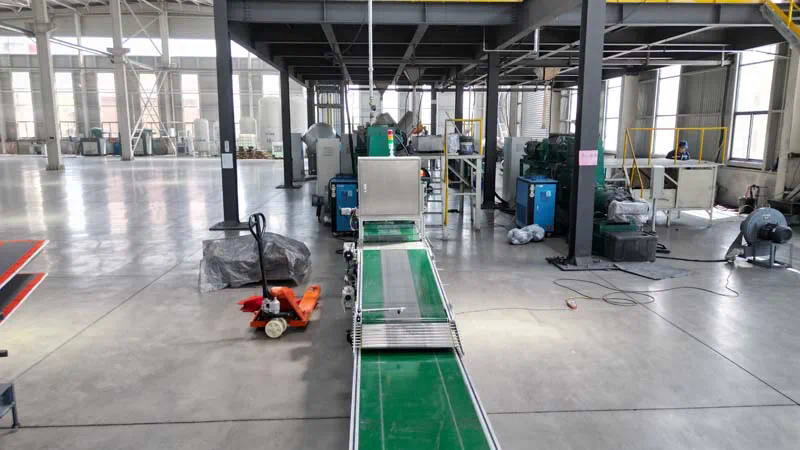Silicon carbide (SiC) composites represent a pivotal advancement in materials science, offering exceptional mechanical properties, thermal stability, and corrosion resistance. This article delves into the intricate processes involved in the preparation, Silicon Carbide Support Rod And Support Beam characterization, and performance analysis of silicon carbide composites. From raw materials to final applications, each stage is meticulously explored to provide a comprehensive understanding of this cutting-edge material.
Introduction
Silicon carbide, a compound of silicon and carbon, has garnered significant attention due to its unique properties that make it suitable for a wide range of applications, from aerospace to electronics. The integration of silicon carbide into composites further enhances its utility by combining its intrinsic properties with those of other materials, such as metals or ceramics. This article elucidates the preparation techniques, analytical methods, and performance evaluations crucial for advancing silicon carbide composites in various industries.
Raw Materials and Synthesis Methods
Raw Materials Selection
The synthesis of silicon carbide composites begins with meticulous selection of raw materials. Silicon carbide powder, characterized by its particle size, purity, and crystal structure, serves as the primary ingredient. Additional materials such as reinforcing fibers (e.g., carbon fibers or ceramic fibers) and matrix materials (e.g., metals or ceramics) are chosen based on the desired composite properties.
Synthesis Techniques
1. Liquid Phase Sintering: This method involves the use of a liquid phase to aid in the densification of silicon carbide powder and other components. Common additives include boron, carbon, and various oxides to promote sintering and enhance mechanical properties.
2. Chemical Vapor Infiltration (CVI): CVI enables the deposition of silicon carbide onto a porous matrix through the reaction of precursor gases. This technique allows for precise control over the composite’s microstructure and composition, crucial for applications requiring high purity and uniformity.
3. Hot Pressing: Combining pressure and heat, hot pressing compacts silicon carbide powder and additives into dense composites. It is effective in producing components with high mechanical strength and dimensional accuracy.
4. Reaction Bonding: Utilizing silicon melt infiltration, reaction bonding forms silicon carbide composites directly within a porous preform of carbon or silicon. This method yields composites with enhanced toughness and resistance to thermal shock.
Characterization Techniques
Microstructural Analysis
Understanding the microstructure of silicon carbide composites is essential for optimizing their performance. Techniques such as scanning electron microscopy (SEM) and transmission electron microscopy (TEM) provide detailed insights into grain size, distribution of phases, and interfaces within the composite structure.
Mechanical Testing
1. Tensile Testing: Evaluates the strength and modulus of elasticity of silicon carbide composites under tension, crucial for assessing their structural integrity and load-bearing capacity.
2. Flexural Testing: Measures the bending strength and fracture toughness, reflecting the material’s resistance to deformation and crack propagation.
3. Hardness Testing: Determines the material’s resistance to indentation or scratching, correlating with wear resistance and durability in abrasive environments.
Thermal Analysis
1. Thermogravimetric Analysis (TGA): Determines the thermal stability and decomposition temperatures of silicon carbide composites, vital for applications exposed to high temperatures or thermal cycling.
2. Differential Scanning Calorimetry (DSC): Measures the heat flow associated with phase transitions and chemical reactions, aiding in the optimization of processing parameters and material design.
Performance Analysis and Applications
Aerospace Applications
Silicon carbide composites find extensive use in aerospace applications due to their lightweight, high strength, and thermal stability. Components such as engine components, heat shields, and structural panels benefit from the material’s ability to withstand extreme temperatures and mechanical stresses.
Electronics and Semiconductor Industry
In the electronics sector, silicon carbide composites are employed in substrates, heat sinks, and electronic packaging due to their excellent thermal conductivity and electrical insulation properties. They enable the efficient dissipation of heat from high-power devices while maintaining electrical integrity.
Nuclear and Energy Applications
The exceptional corrosion resistance and neutron irradiation tolerance of silicon carbide composites make them ideal for nuclear reactor components and energy generation systems. Their ability to withstand harsh environments ensures long-term reliability and safety in critical applications.
Automotive and Industrial Components
With the automotive industry transitioning towards electric vehicles, silicon carbide composites play a pivotal role in power electronics and motor drives. Their high thermal conductivity and efficiency contribute to the performance and longevity of electric propulsion systems.
Future Directions and Challenges
Despite the remarkable progress in silicon carbide composite technology, several challenges remain, including cost-effective manufacturing at scale, integration with existing materials, and further enhancement of specific cdn cgi email protection properties like toughness and environmental stability. Future research focuses on refining synthesis techniques, exploring novel composite architectures, and expanding applications in emerging fields such as quantum technology and biomedicine.
Conclusion

In conclusion, silicon carbide composites represent a cornerstone of modern materials science, offering unparalleled combinations of mechanical strength, thermal stability, and chemical resistance. The synergy between advanced synthesis methods, rigorous characterization techniques, and diverse applications underscores their pivotal role in advancing technology across multiple industries. Continued research and innovation promise to unlock new frontiers for silicon carbide composites, shaping the future of materials engineering.


